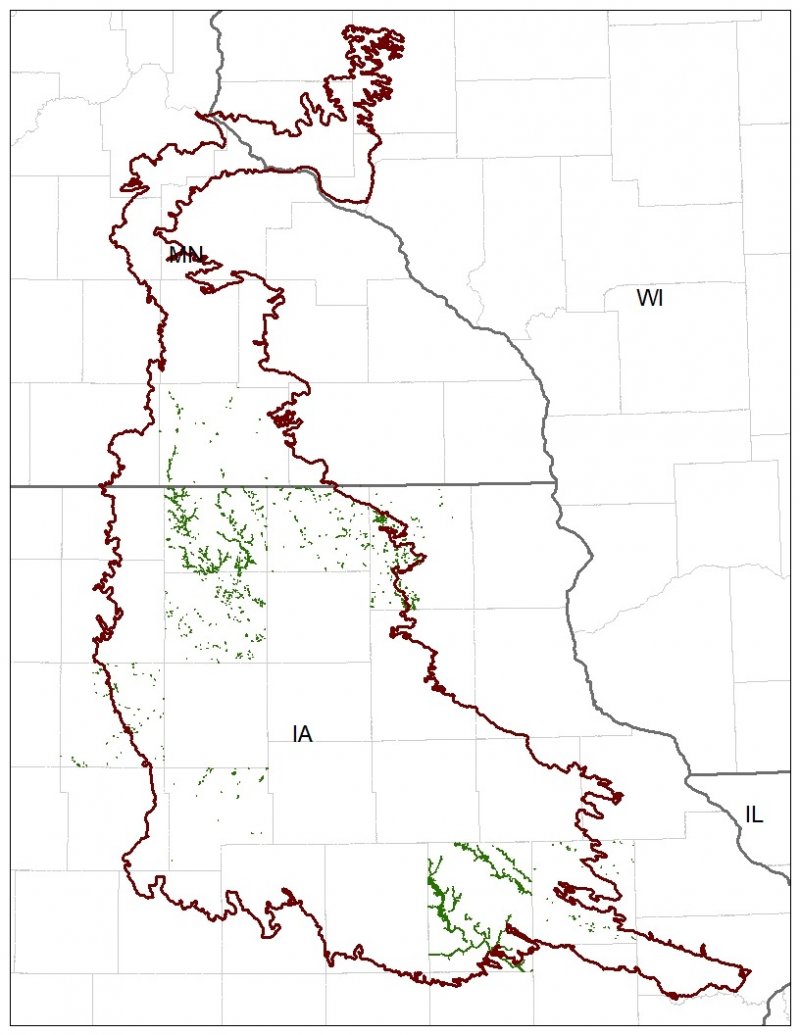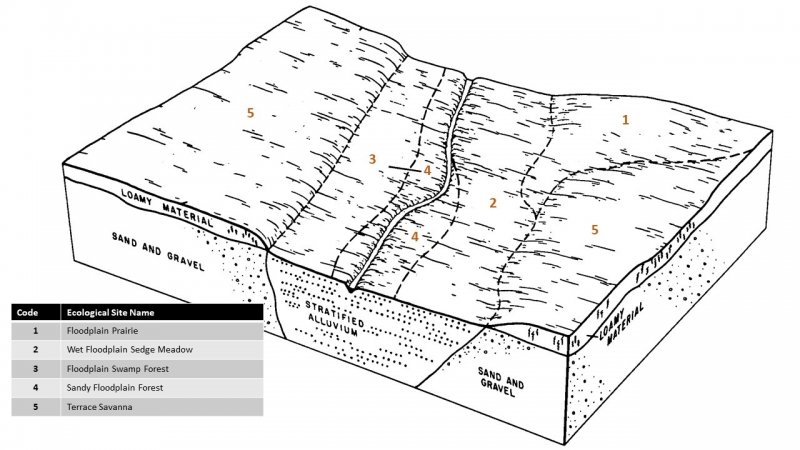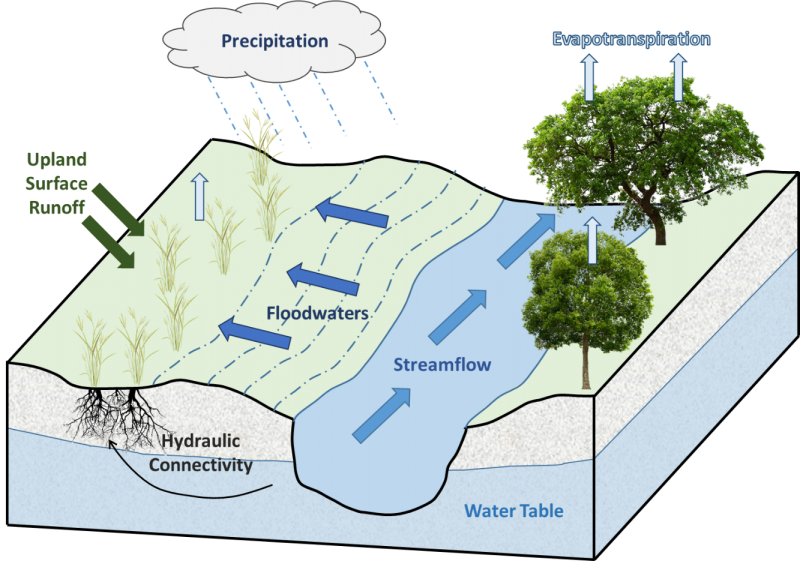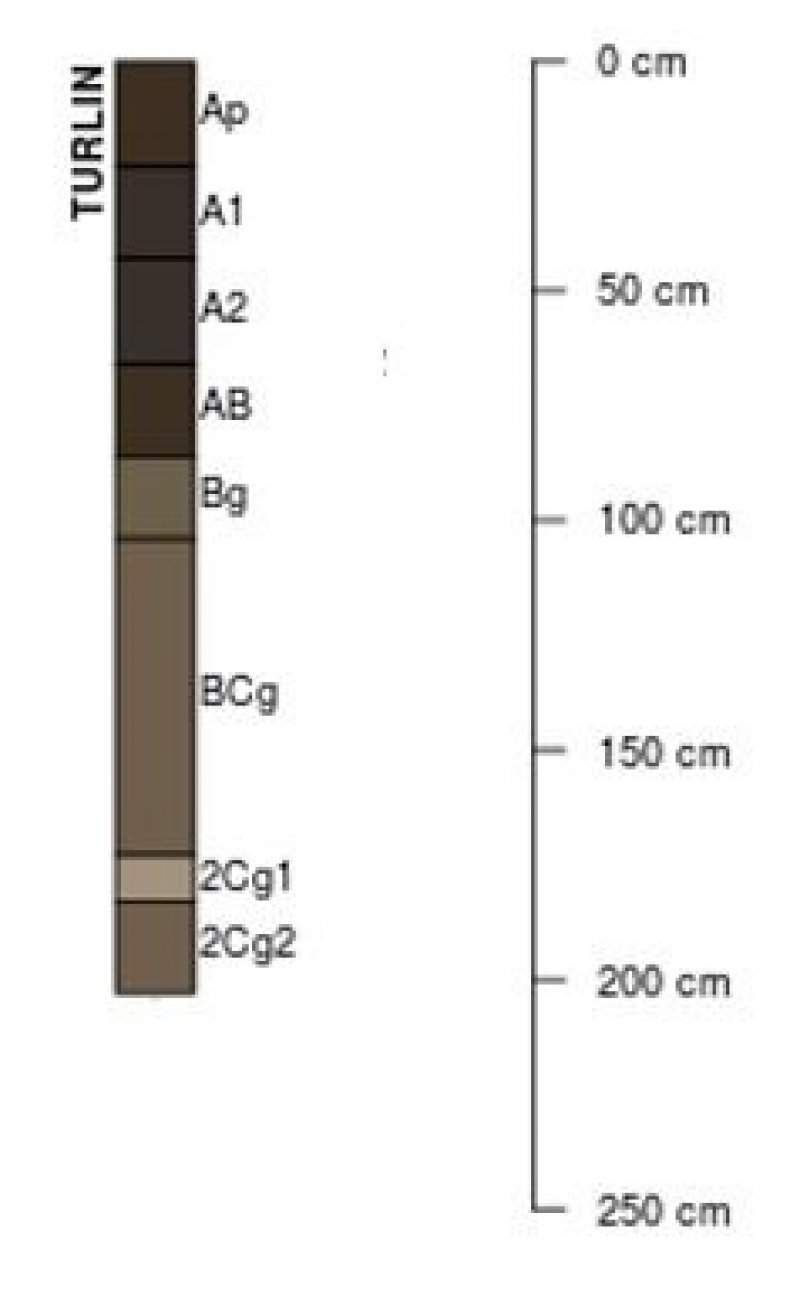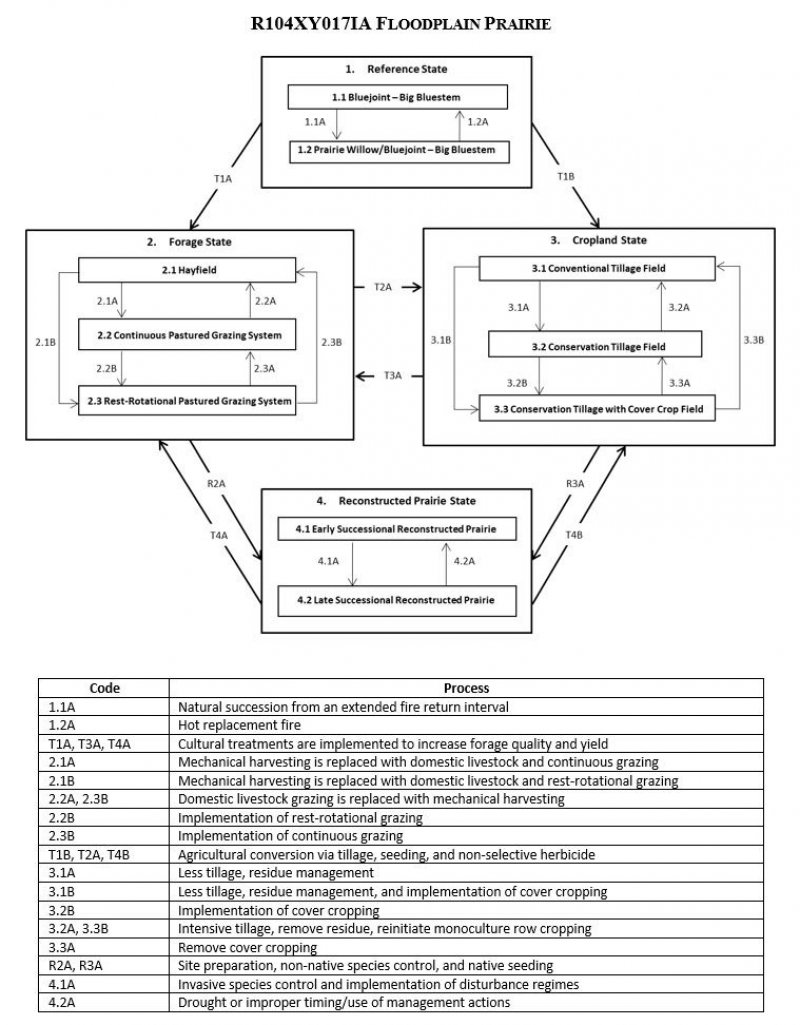
Natural Resources
Conservation Service
Ecological site R104XY017IA
Floodplain Prairie
Last updated: 5/18/2020
Accessed: 04/06/2025
General information
Provisional. A provisional ecological site description has undergone quality control and quality assurance review. It contains a working state and transition model and enough information to identify the ecological site.
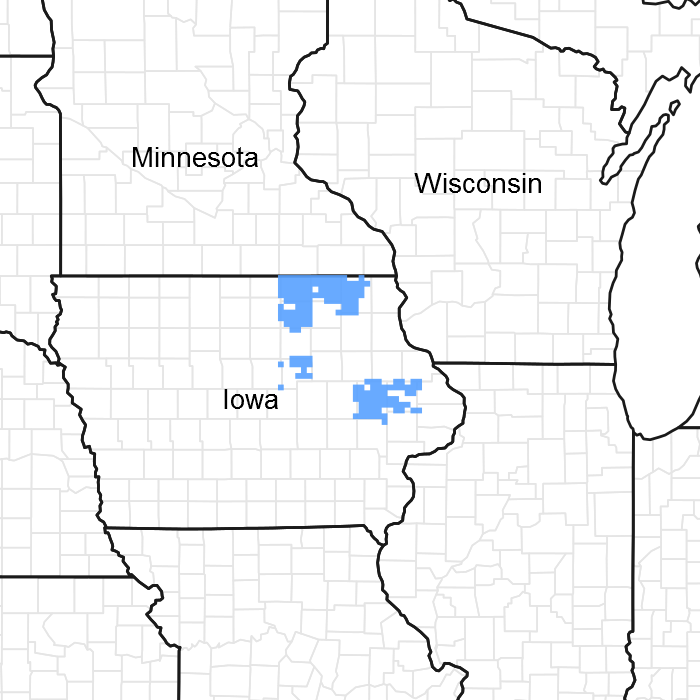
Figure 1. Mapped extent
Areas shown in blue indicate the maximum mapped extent of this ecological site. Other ecological sites likely occur within the highlighted areas. It is also possible for this ecological site to occur outside of highlighted areas if detailed soil survey has not been completed or recently updated.
MLRA notes
Major Land Resource Area (MLRA): 104X–Eastern Iowa and Minnesota Till Prairies
The Eastern Iowa and Minnesota Till Prairies (MLRA 104) includes the Iowan Surface, Oak Savanna, and Western Coulee and Ridges landforms (Prior 1991; MDNR 2005; WDNR 2015). It spans three states (Iowa, 74 percent; Minnesota, 22 percent; Wisconsin, 4 percent), encompassing approximately 9,660 square miles (Figure 1). The elevation ranges from approximately 1,310 feet above sea level (ASL) on the highest ridges to about 985 feet ASL in the lowest valleys. Local relief is mainly 10 to 20 feet. Glacial till and outwash deposits cover the uplands of the MLRA with recent alluvium located in the major river valleys. Paleozoic bedrock sediments, comprised primarily of shale and limestone, lies beneath the glacial material. The depth to limestone is shallow, resulting in karst topography across much of the area (USDA-NRCS 2006).
The vegetation in the MLRA has undergone drastic changes over time. Spruce forests dominated the landscape 30,000 to 21,500 years ago. As the last glacial maximum peaked 21,500 to 16,000 years ago, they were replaced with open tundras and parklands. The end of the Pleistocene Epoch saw a warming climate that initially prompted the return of spruce forests, but as the warming continued, spruce trees were replaced by deciduous trees (Baker et al. 1990). Not until approximately 9,000 years ago did the vegetation transition to prairies as climatic conditions continued to warm and subsequently dry. Between 4,000 and 3,000 years ago, oak savannas began intermingling within the prairie landscape, while the more wooded and forested areas maintained a foothold in sheltered areas. This prairie-forest transition ecosystem formed the dominant landscapes until the arrival of European settlers (Baker et al. 1992).
Classification relationships
USFS Subregions: North Central U.S. Driftless and Escarpment (222L), Minnesota and Northeast Iowa Morainal-Oak Savannah (222M), Central Dissected Till Plains (251C) Sections; Menominee Eroded Pre-Wisconsin Till (222La), Oak Savannah Till and Loess Plains (222Me), Southeast Iowa Rolling Loess Hills (251Ch) Subsections (Cleland et al. 2007)
U.S. EPA Level IV Ecoregion: Eastern Iowa and Minnesota Drift Plains (47c), Rolling Loess Prairies (47f), Lower St. Croix and Vermillion Valleys (47g), Rochester/Paleozoic Plateau Upland (52c) (USEPA 2013)
National Vegetation Classification – Ecological Systems: Central Tallgrass Prairie (CES205.683) (NatureServe 2018)
National Vegetation Classification - Plant Associations: Andropogon gerardii – Panicum virgatum – helianthus grosseserratus Wet Meadow (CEGL002024) (Nature Serve 2015)
Biophysical Settings: Central Tallgrass Prairie (BpS 4214210) (LANDFIRE 2009)
Natural Resources Conservation Service – Iowa Plant Community Species List: Prairie, Central Wet-Mesic Tallgrass (USDA-NRCS 2007)
Iowa Department of Natural Resources: Floodplain Prairie (INAI 1984)
Minnesota Department of Natural Resources: WPs54 Southern Wet Prairie (MDNR 2005)
U.S. Army Corps of Engineers: Wet to Wet-Mesic Prairie (Eggers and Reed 2015)
Ecological site concept
Floodplain Prairies are located within the green areas on the map (Figure 1). They occur on floodplains in river valleys. The soils are Mollisols that are somewhat poorly to well-drained and deep, formed in alluvium. The site can experience rare to occasional flooding.
The historic pre-European settlement vegetation on this ecological site was dominated by mesic and wet-mesic tallgrass prairie vegetation. Bluejoint (Calamagrostis canadensis (Michx.) P. Beauv.) and big bluestem (Andropogon gerardii Vitman) are the dominant species on Floodplain Prairies. Other grasses that may occur include prairie cordgrass (Spartina pectinata Bosc ex Link), switchgrass (Panicum virgatum L.), and Indiangrass (Sorghastrum nutans (L.) Nash) (NatureServe 2018). Forbs typical of an undisturbed plant community associated with this ecological site may include button eryngo (Eryngium yuccifolium Michx.) and fourflower yellow loosestrife (Lysimachia quadriflora Sims) (Drobney et al. 2001; NatureServe 2018). Periodic fire and occasional flooding are the primary disturbance factors that maintain this site, while drought and native mammal grazing are secondary factors (LANDFIRE 2009; NatureServe 2018).
Associated sites
| R104XY015IA |
Terrace Savanna Alluvial parent material on low stream terraces including Bertrand, Bixby, Coloma, Curran, Dakota, Dells, Ely, Finchford, Hayfield, Hoopeston, Judson, Lawler, Nevin, Oakton, Raddle, Radford, Richwood, Snider, Terril, Wapsie, Wapsie variant, Waukee, Waukegan, Wiota, and Worthen |
|---|---|
| R104XY018IA |
Wet Floodplain Sedge Meadow Alluvial parent material on floodplains that is poorly-drained including Calco, Coland, Colo, Sawmill, Udifluvents, Zook |
Similar sites
| R104XY015IA |
Terrace Savanna Terrace Savannas occur on low stream terraces that are rarely flooded and have a sparse overstory of trees. |
|---|
Table 1. Dominant plant species
| Tree |
Not specified |
|---|---|
| Shrub |
Not specified |
| Herbaceous |
(1) Calamagrostis canadensis |
Click on box and path labels to scroll to the respective text.
